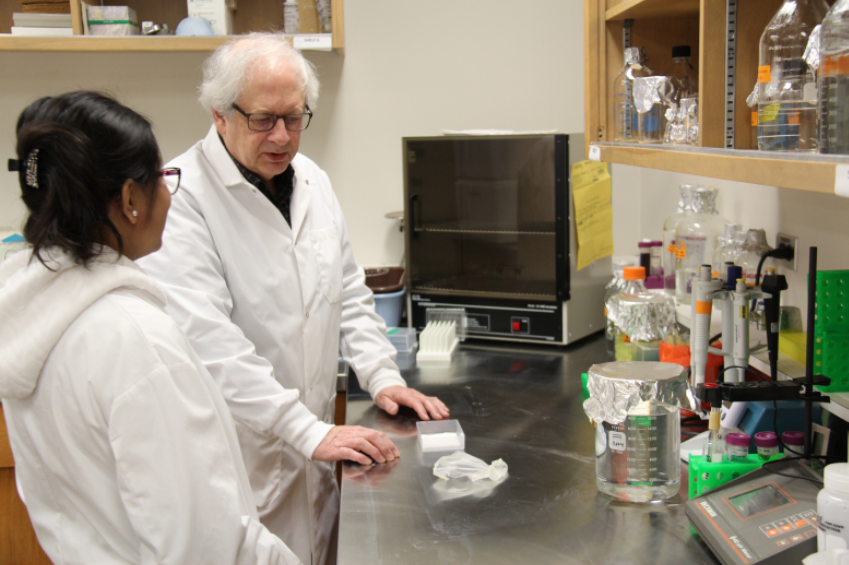
Study looks at arthritis and eye inflammation in children
About eight per cent of children who have arthritis also have uveitis – inflammation of the eye.
By Kristen McEwenPediatric rheumatologist Dr. Alan Rosenberg and his international team are exploring the association between childhood arthritis and uveitis in a new study.
“The association between childhood arthritis and eye inflammation has been known for a long time but no one understands why the child should have inflammation of a joint and an eye, but nothing else,” Rosenberg said.
The seemingly isolated inflammation of joints and an eye most commonly begins in young girls. These children also usually have only a small number of joints involved with arthritis and have antibodies that target a particular protein in the nucleus of cells.
Rosenberg and his team, which includes collaborators from throughout Canada, the United States, and the Netherlands, believe that there is some genetic predisposition for these children to develop the arthritis-uveitis condition. By identifying patient features, blood tests and genetic markers, the team is looking to predict which children will develop the disease, the outcomes and how they will respond to treatment.
The study is supported by the Canadian Arthritis Society, the Jim Pattison Children’s Hospital Foundation, and the College of Medicine.
Throughout his career, Rosenberg’s research has focused on understanding childhood arthritis causes, including genetic predispositions, and prevention. During his medical school and pediatric specialty training, Rosenberg narrowed down his field of interest to pediatric rheumatology. .
“The patients I seemed to remember with particular clarity during my training were children with rheumatic diseases such as arthritis and autoimmune diseases. For these children there were no trained pediatric rheumatology specialists in Canada to care for them,” he said.
During that time, pediatric rheumatology was in its infancy. After finishing his residency in Winnipeg, Rosenberg trained with Dr. Ross Petty, also a University of Saskatchewan College of Medicine graduate, who was Canada’s first formally trained pediatric rheumatologist.
After completing his pediatric rheumatology training, Rosenberg was recruited back to the University of Saskatchewan to establish the province’s pediatric rheumatology patient care, teaching and research programs. Throughout his career Dr. Rosenberg has received generous support from the Arthritis Society.
“The Arthritis Society has really been instrumental in galvanizing the Canadian rheumatology community into a very productive group,” Rosenberg said.
The organization works to increase awareness around arthritis and education for families, and it has been a longtime supporter of Saskatchewan patient care programs, Rosenberg’s research and USask’s Pediatric Rheumatic Disease Research and Innovation Laboratory. Rosenberg directs the activities of the lab, which focuses on three principles: understanding the earliest origins and mechanisms of disease to guide prevention, establishing multi-disciplinary collaborations to accelerate discovery and innovation, and considering social determinants that influence the occurrence and outcomes of childhood rheumatic diseases.
His research has largely centered on disease prevention. While treating disease is incredibly important, prevention will save misery for patients and families and be less costly, Rosenberg said.
There is compelling evidence that origins of many chronic diseases, including arthritis, are in early and even prenatally, Rosenberg said.
“When we think of the cost of arthritis and rheumatic disease care for patients, families and society, investing money in research to improve outcomes, prevent the disease or find a cure is minimal relative to the cost of untreated, or inadequately treated disease,” he said.
